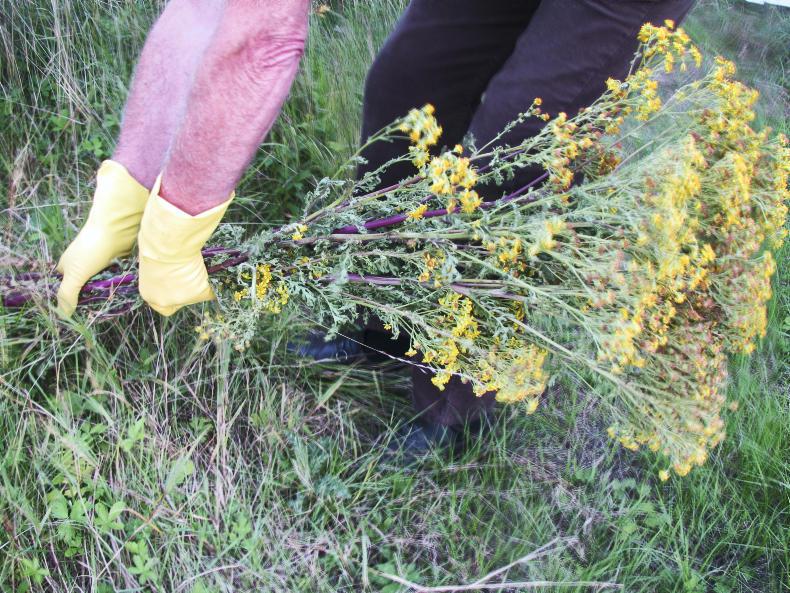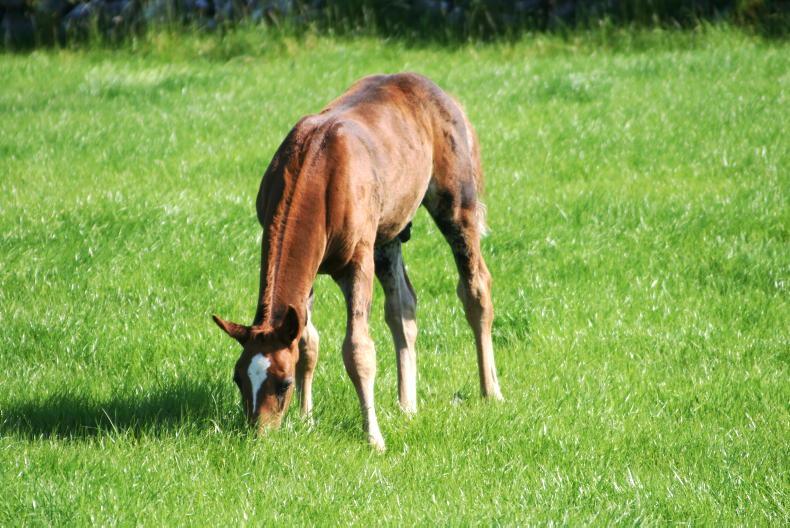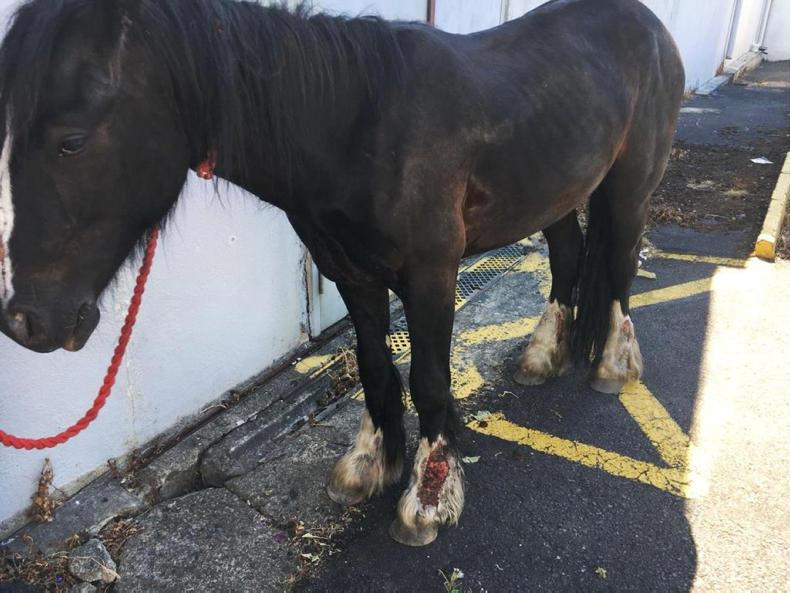EVERY summer horse owners across Ireland have to deal with ragwort. This deadly poisonous plant can be fatal to horses and is very difficult to ever fully remove from paddocks.
In general horses will instinctively avoid eating ragwort, however, if grazing is sparse they will eat the weed. It is most dangerous to young and old animals. The poison contained in the weed does not accumulate in the body, over time it destroys liver cells and eventually can result in liver failure.
Owners must be very careful not to leave picked or dried ragwort in paddocks with livestock. The weed is most palatable when it is dried and is just as dangerous. Hay and haylage cut from a field with ragwort may contain the weed, horse owners are advised to always check the bales before feeding.
Ragwort is classified as a noxious weed and it is an offence for a land owner/occupier not to prevent to growth of noxious weeds. Locations can be reported for having noxious weeds. If you wish to report a location, more information or report forms can be found on the Department of Agriculture website.
NATURAL CONTROL
Pulling ragwort is a very labour intensive job. The easiest time to pull the weed is before it has flowered, also pulling them after heavy rainfall usually makes them easier to remove. Although ragwort is biennial, if a paddock has a history of infestation then the weed will need to be picked every year to try to control and prevent further growth.
When pulling ragwort it is very important to remove as much of the root as possible because the root can easily regenerate. Special forks are available to help making pulling the weed easier and to try and remove as much of the weed as possible. If you are concerned that you have been unable to remove all of the root when pulling ragwort then it is recommended that you pour rock salt (this is sold in most agricultural merchants) into the hole on top of the remaining root.
Cutting is not recommended as a means of combating ragwort. It can be used as an emergency method when the weed is in the early flowering stage but it encourages vigorous regrowth so it is best avoided.
Correct grazing management can also help control the spread of ragwort.
CHEMICAL CONTROL
As is often the case with using herbicides they can be very effective when they are used correctly and at the right time of year but horse owners should always be careful when using them on land that is grazed.
For most herbicides it is important that the land is not grazed for a period of time afterwards. Always read and follow the instructions carefully. If there is a water drinker in the field when it is sprayed make sure it is thoroughly cleaned out before horses are let back into the paddock.
The Department of Agriculture recommends that the best time to spray for ragwort is in early spring (February to mid-March) or late autumn (mid-September to mid-November). Recommended sprays for ragwort include: MCPA 500, 2, 4-D Amine, Bandock, Forefront and Pastors.
Natural herbicides are available to help combat the spread of ragwort. Always wear protective clothing when dealing with ragwort and herbicides and be vigilant for any regrowth of the weed.


 This is a subscriber-only article
This is a subscriber-only article
 It looks like you're browsing in private mode
It looks like you're browsing in private mode










SHARING OPTIONS: